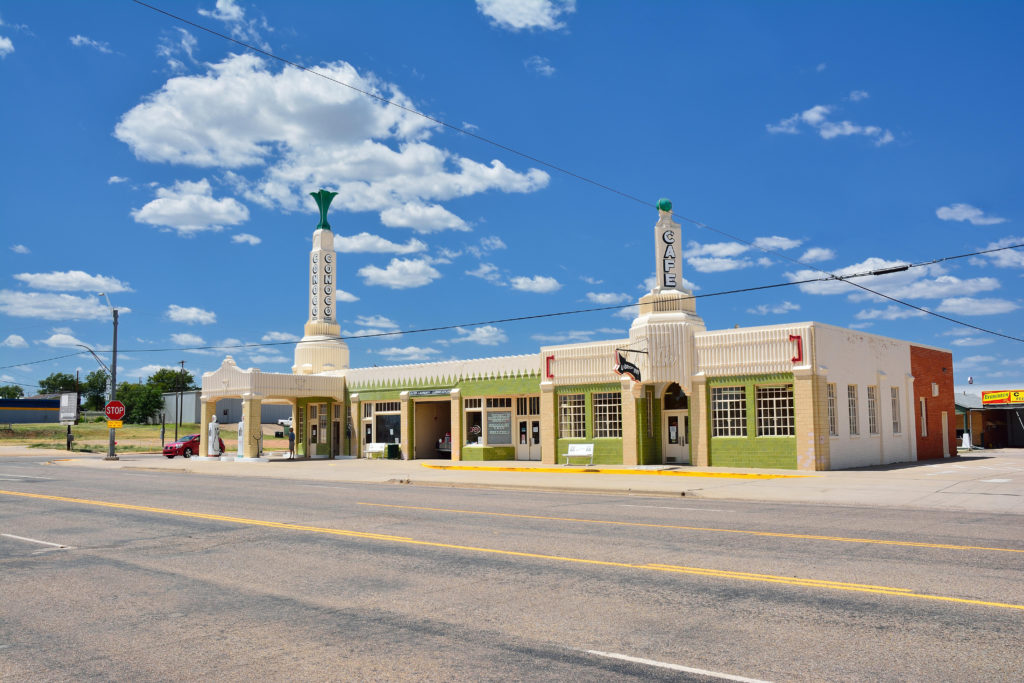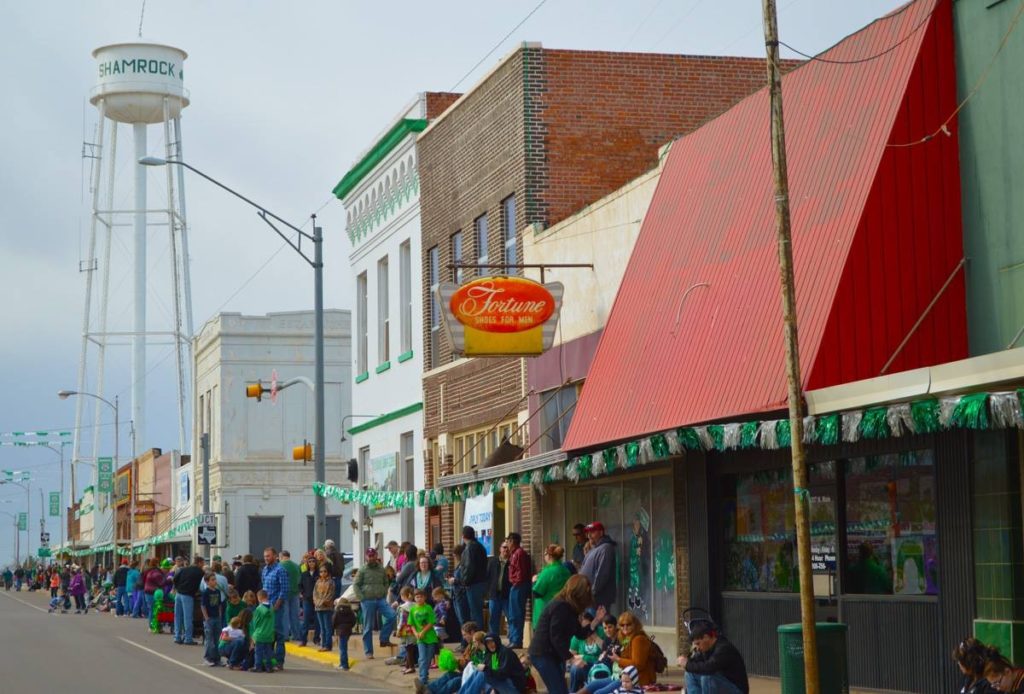City Spotlight: Shamrock
Shamrock may be the most famous small town in Texas you have never heard of. Situated out on the Panhandle, not far from the border with Oklahoma, Shamrock is surrounded by open plains, ranches, cotton fields, and big blue skies. Route 66 thrust the small town into the limelight and helped the town founded by Irish immigrants become one of America’s classic roadside destinations.
(Bad) Luck of the Irish
One of the earliest European settlers in Wheeler County chose the town’s name. George Nickel was an Irish sheep rancher who settled in the area and tried to open a post office in 1890. He chose the name Shamrock for his little spot, hoping it would bring good luck. The name may have played a role in Shamrock’s future fortunes — but not Nickel’s. His dugout home burned down the following year, and he never opened his post office.
Route 66 Outpost
At the turn of the century, the railroad came to town, and Shamrock grew into a small trading outpost and water stop. When oil was discovered nearby, the population swelled to a few thousand residents. But it was the improvement of U.S. Highway 66 in the 1950s that would lead to Shamrock’s mini boom. With the refurbished road came travelers, and soon Shamrock’s main street filled with auto garages, filling stations, restaurants, and motor courts to serve those driving the famous highway.

Iconic Landmarks
Several of Shamrock’s roadside attractions have become icons of the style and allure of the classic American road trip. The U-Drop Inn, which opened in 1936, was once the only cafe within 100 miles of the Shamrock, and it became a well-known pit stop for travelers. The old filling stations in Shamrock were also notable for their unique architecture. Perhaps the most famous is the Tower Conoco Station, with its distinctive sand-colored facade and art deco tower. It served as the inspiration for Ramone’s House of Body Art in the Pixar film Cars.

Culture and Festivals
Shamrock is still a popular spot for Route 66 travelers, but visitors also seek out this little Panhandle town for its festivals and museum. The town tips its hat to its Irish roots by holding an annual St. Patrick’s Day Celebration, as well as the Irish Craft Fest each fall.
The old Reynolds Hotel, first built in 1928, has been transformed into the Pioneer West Museum. It interprets the history of the Texas Panhandle, and visitors can discover pioneer artifacts, Native American arrowheads, old-fashioned medical equipment, and even items on long-term loan from Space Center Houston.
Explore more Texas towns here.
© 2020 Texas Farm Bureau



